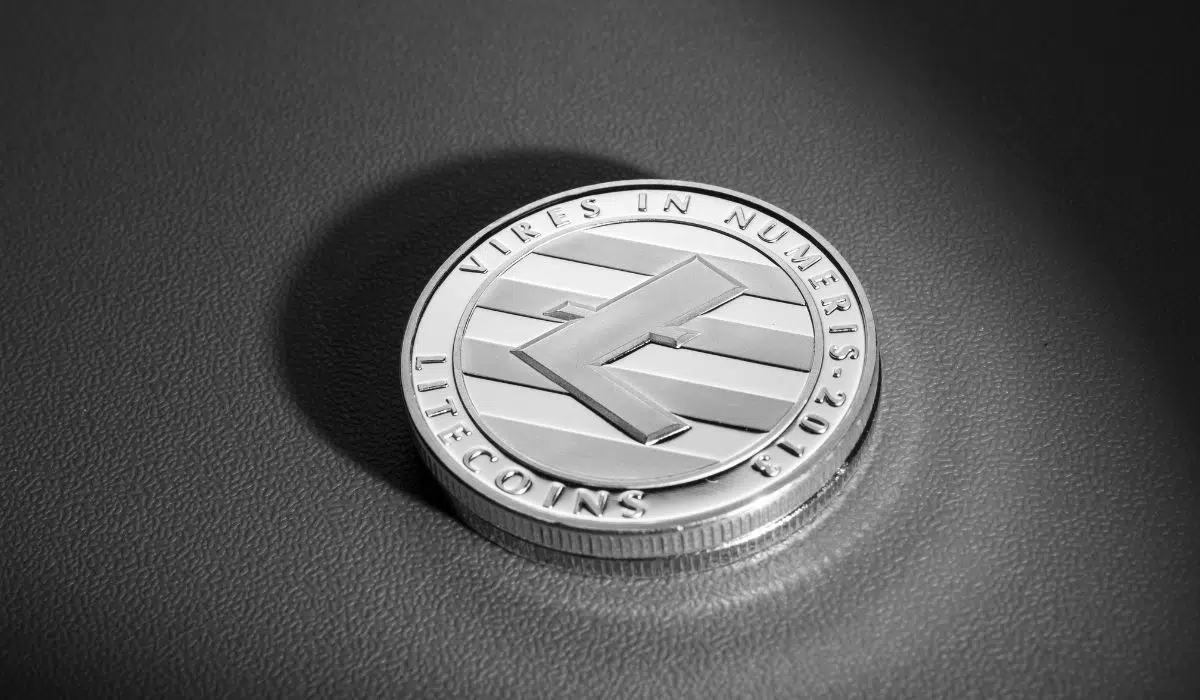LTC-20 is an experimental token standard proposed by members of the Litecoin community following the successful implementation of the BRC-20 standard on Bitcoin. The protocol, introduced in May 2023, allows the creation of fungible tokens with smart contract functionalities on the Litecoin mainnet, enabling users to mint, manage, and transfer these tokens across various applications within the blockchain.
The implementation of LTC-20 has further enhanced the value and utility of LTC. By leveraging technologies like Ordinals, users can inscribe metadata onto Litecoin transactions, similar to how it can be done on the Bitcoin blockchain with BRC-20 tokens.
Developers behind LTC-20 state that it is an experimental project to demonstrate the off-chain capabilities that are possible on Litecoin and should by no means be considered the de facto standard for fungibility on the blockchain.
However, the launch of the token standard resulted in Litecoin’s on-chain activity surging to an all-time as it processed 585,000 transactions within 24 hours. According to reports, over 850 LTC-20 standard coins were minted on the blockchain. Meanwhile, the number of active and newly created LTC addresses also hit historical figures that day. This uptick reflects the growing interest within the community for decentralized finance applications (DeFi) and meme coins on Litecoin.

Key Features Of LTC-20
LTC-20 is another testament to the symbiotic relationship between Litecoin and Bitcoin as it builds upon the concepts established by the BRC-20 standard for BTC. Here are some key features of the Litecoin standard:
- LTC-20 allows developers to create and issue tokens on Litecoin that can be used to interact with various decentralized applications (DApps) on the blockchain.
- The total supply of LTC-20 tokens is capped at 84 million, which aligns with the overall supply limit of LTC.
- Litecoin’s faster block creation time of 2.5 minutes compared to Bitcoin’s 10 minutes enhances the utility of LTC-20 tokens as transactions can be processed faster.
- Litecoin is known for its low transaction fees, making LTC-20 tokens a viable option for users to transact in.
- Unlike Bitcoin, the Litecoin network has a formal leadership and organizational structure. Therefore, developers and entities can confidently build using LTC-20 technology.
How To Issue LTC-20 Tokens On Litecoin
Here are the steps involved in minting LTC-20 standard cryptocurrencies on the Litecoin blockchain:
1. Set Up A Litecoin-Compatible Wallet
The first step is to ensure that the user has a wallet that supports Litecoin’s Taproot and SegWit upgrades. This is essential for interacting with the blockchain’s LTC-20 standard.
2. Deploying An LTC-20 Token
To create an LTC-20 token, users need to perform the ‘Deploy’ function. The process involves using JSON (JavaScript Object Notation) objects to inscribe the token on the mainnet. The following are the key parameters for this operation
- p: Protocol Identifier
- op: Operation Type – this will be set to ‘Deploy’
- tick: Provide a four-letter ticker symbol for the LTC-20 token
- amt: The total supply of tokens that will be minted
3. Minting LTC-20 Token
Once the LTC-20 token has been deployed, it can be minted on the blockchain using the ‘Mint’ option. The key parameters for this process are the same as the deployment process.
Inscribing The LTC-20 Token
LTC-20 tokens can be inscribed, which is a process where files or text blocks are uploaded onto the token. For this, token issuers can visit Litecoin inscription platforms such as Litescribe, provide their wallet addresses, and upload their content. There will be fees associated with the inscription.
Track And Manage LTC-20 Tokens
Once the tokens have been inscribed and minted, issuers can track the progress on the Litecoin network using their respective inscription IDs via platforms like Ordinalslite or Litescribe. These platforms can also be used to trade and manage LTC-20 tokens within the ecosystem.
Popular LTC-20 Platforms
Here are some notable cryptocurrency platforms that support LTC-20 tokens and their purposes
Gate.io
Gate.io is a prominent cryptocurrency exchange that became the first platform to support Ordinals, BRC-20, and LTC-20 tokens. It offers a marketplace for buying and selling LTC-20 assets. Gate.io also provides tools for inscribing and querying LTC-20 tokens.
Ordinalslite.xyz
Ordinalslite is a platform that allows users to inscribe on LTC-20 tokens, providing tools for seamlessly deploying and managing the assets. It has a simple interface for issuing LTC-20 tokens and transferring inscriptions and supports the trading of the assets within its marketplace.
Unilit
Unilit and Gate.io work together to enhance the functionality of LTC-20 tokens, with an added focus on transaction verification and indexing rules. The platform aims to resolve the technical issues related to LTC-20 tokens and offers open-source indexing tools that can be used by the Litecoin community for development.
Atomic Wallet
Atomic Wallet is a multi-currency wallet that supports LTC and allows users to manage LTC-20 assets. It is a non-custodial wallet, meaning users have complete control over the management of their funds.
Electrum Wallet
Electrum is a lightweight wallet with robust security features that support LTC and LTC-20 transactions. The wallet also enables the storing, trading, and management of LTC-20 inscriptions.
Final Thoughts
LTC-20 is a newly developed token standard on Litecoin that is heavily inspired by Bitcoin’s BRC-20 standard. The protocol allows for the issuance of fungible tokens that can be minted, transferred, and managed by users within the ecosystem.
The development is described as an experimental feature aimed at testing the fungibility of Litecoin and providing the tools for enhancing user engagement and market dynamics within the blockchain.
The introduction of LTC-20 has resulted in a significant increase in on-chain activity on Litecoin, with transaction levels surging to historic highs ever since. This uptick in active users reflects the Litecoin community’s interest in advancing the use cases of the decentralized network and revitalizing the market presence of LTC.






